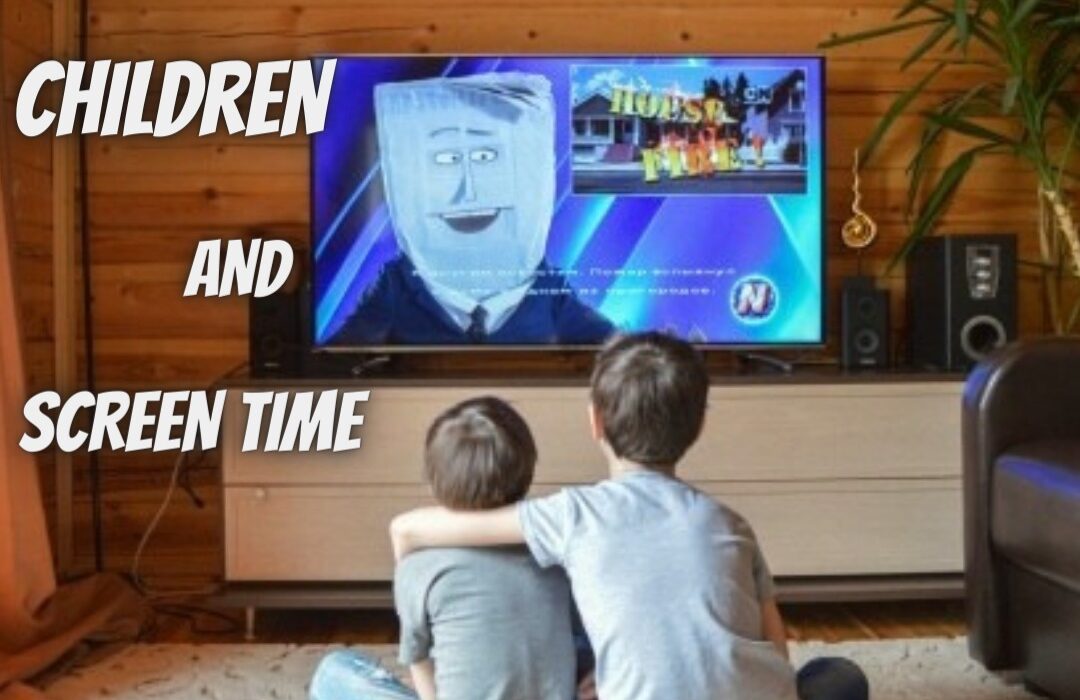DOES SCREEN TIME HAVE AN EFFECT ON MY CHILD’S VISION?
How much time does your child spend watching TV or movies, playing with a smartphone or computer, or enjoying video games? Although some screen time can be educational.
The American Academy of Pediatrics discourages media use by children younger than 2 and recommends limiting older children’s screen time to no more than one or two hours a day.
Too much screen time can cause eye strain, irritability, and other discomforts for kids. It can also raise their risk for myopia, also known as nearsightedness.
EYE PROBLEMS CAUSED BY EXCESSIVE SCREEN TIME
- Eye fatigue:
Eye fatigue — called asthenopia — is characterized by eye discomfort, dimness of vision, and headache. Asthenopia can be caused by overuse of the eye, for example during a period of prolonged focus on a screen. Any glare on the screen can further strain the eyes.
Children with eye fatigue may complain of headaches, eye pain, or feeling tired, headaches. They may lose interest in tasks such as reading.
Another issue is that kids focus so intensely on their screens. This prolonged close-focus of attention adds to fatigue. “Our eyes need breaks from close-up focus,” says Dr. Malik. “Children can lose track of time when they become absorbed.”
- Dry and irritated eyes
The eyes can also get dry and irritated during long stretches of screen use. Studies show that people of all ages blink far less often when concentrating on a screen, which in turn causes the eyes to dry out. A clear and stable tear film on the eye surface is essential for clear vision. This problem can be worse for children who may have to look up at a screen that’s positioned for adult use.
- Loss of focus flexibility
When children’s eyes stay focused close-up for long periods, they can find it difficult to adjust to distance vision later. Generally, that’s a short-term problem, and the eyes adjust back to their normal flexibility.
- Nearsightedness
Kids who are on screens are typically indoors. “Exposure to natural daylight is critical to developing eyes,” says Malik. “Kids need time playing outside for their health, but also for their eyes.”
Studies have found that children who spend more time indoors are more likely to develop nearsightedness (myopia). The exact process is still being studied, but researchers believe UV light (as long as the eyes are protected from intense sunlight) plays an important role in healthy eye development. The rate of nearsightedness in children has increased dramatically in the past 30 years.
Beyond the eyes:
Impact on sleep and overall health
Screen time can also disturb kids’ sleep. First of all, the exciting content of many video games and movies can wind a child up when they should be winding down for bed or a nap.
Second, research shows that when computers and similar devices are used in the evening, the blue light they emit alters the brain’s sleep rhythms. The brain reads the screen light as “daytime” and shifts the body’s circadian rhythm.
A better strategy is to practice consistent, healthy habits to protect your child’s eyes during screen time. And when it comes to sleep, the best thing you can do is limit screen time, particularly in the hours before bedtime. Aim for no devices or screens for one hour before bedtime.
Help your child practice good eye habits
Most families can’t — and don’t want to — completely remove screened devices from their children’s lives. They’re part of living in the modern world. What you can do is protect your child’s eyes by teaching them healthy screen time habits.
- The 20-20-20-2 rule
Since focusing on a “near task” — such as reading, writing or staring at a screen — increases the demand on eyes’ microscopic focusing system, eyes need a break to reset their focusing systems. Use the “20-20-20-2 rule.” During any concentrated visual task, encourage your child to break focus every 20 minutes, focus on something at least 20 feet away for 20 seconds, and blink 20 times. This allows the eyes to relax and to return to their natural position and baseline settings. (Adults should use this trick too!)
The final “2” is a recommendation for two hours of outdoor play each day to stimulate the healthy development of the focusing system of children’s eyes and ward off nearsightedness.
- Screen size and distance
The smaller and closer a screen is, the harder your child’s eyes must work to focus on it. If possible, encourage your child to work on a larger screen, such as a laptop or desktop computer, rather than a small phone screen.
Dr. Malik suggests positioning screens at least an arm’s length away to minimize eye strain. The screen should be positioned so your child looks slightly down at it, not up. Consider following the 1-2-10 rule when it comes to screen positioning: Hold phones 1 foot away; sit 2 feet away from laptops and desktops; and encourage children to sit 10 feet away from the television.
- Eliminate glare
The more reflection on your child’s computer screen, the harder their eyes must work. Lower the brightness settings on your child’s computer and other devices (there is often a setting that will do this automatically) and watch for glare on the screen to ensure comfortable viewing.
- Have your child’s eyes examined
Make regular eye exams part of your child’s routine healthcare schedule. “Your child’s vision is a rapidly developing sense,” says Dr. Malik. “It deserves screening for problems and timely treatment to ensure best outcomes.”
Make sure at minimum your child is getting either the annual vision screening provided at school or a vision screening at your pediatrician’s office during your child’s next well check.
Make sure you monitor your child’s eye health with a comprehensive eye exam every year and get them the right vision correction when needed.
Even if your child has a normal vision screening, they can still be at risk of asthenopia or other eye problems. If your child complains of ongoing headaches, dry or irritated eyes, or eye pain, it’s important to schedule a comprehensive eye exam with a pediatric ophthalmologist or optometrist. Unlike vision screenings, comprehensive eye exams evaluate not only the focusing system of the eye but its structure and overall health, checking for any underlying problems that may manifest during periods of high stress.



